![]()
![]()
![]()
Use LEFT and RIGHT arrow keys to navigate between flashcards;
Use UP and DOWN arrow keys to flip the card;
H to show hint;
A reads text to speech;
23 Cards in this Set
- Front
- Back
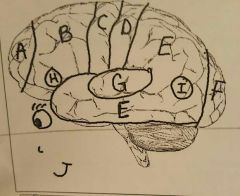
In charge of personality, judgement, planning, motivation, and Intelligence |
Prefrontal Area (A) |
|
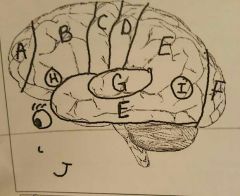
Interprets sound - ie: tone and volume |
Auditory Association Area (G) |
|
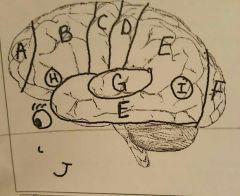
Physical movement of the mouth, tongue, lips, and jaw to make speech possible |
Motor Speech Area (H) |
|
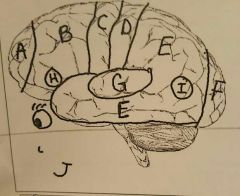
Physical Sight |
Visual cortex (F) |
|

Learned movement - typing, bike riding |
Premotor area (B) |
|
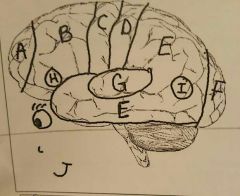
Primary Auditory Area |
Primary Auditory Area (G) |
|
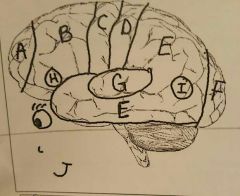
Interprets visual and auditory impulses so language is understood, makes sense of what is to be spoken. |
Sensory Speech Area (I) |
|
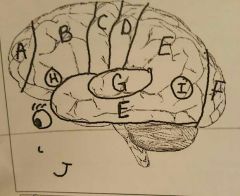
Makes sense of what you see |
Visual Association Area (F) |
|
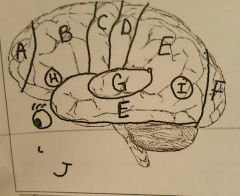
Physical movement of specific parts - each area of this brain region is connected to a specific area of the body |
Primary Somatic Motor Area (C) |
|
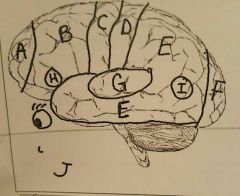
Receives sensory information from various parts of the body, each part of this brain region is connected to a specific area of the body. |
Primary Somatic Sensory Area (E) |
|
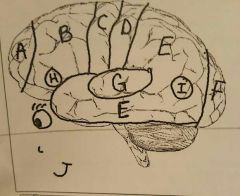
Interprets and analyzes sensory input |
Primary Sensory Association Area (D) |
|
|
Involves conscious thought, perception, communication and memory |
Cerebral Cortex ( gray matter) |
|
|
Allows communication between cerebral areas, cerebral Cortex and other brain regions |
Cerebral White Matter |
|
|
Connects left and right and right sides of the brain |
Corpus Callosum |
|
|
Relay center for senses - touches, hearing, vision, taste, pain, temperature, NOT SMELL |
Thalamus |
|
|
Involves basic drives - hunger, thrist, sleep, sex, rage, aggression, pleasure and fear |
Hypothalamus |
|
|
Biological clock and body rhythms |
Pineal Gland |
|
|
Controls heartbeat, breathing, and vasoconstriction |
Medulla Oblongata |
|
|
Assists in controlling respiration, connection center, redirects signals to and from spinal cord. |
Pons |
|
|
Regulates auditory and visual reflexes |
Midbrain |
|
|
Cerebrospinal fluid flow through these areas |
Ventricles |
|
|
Releases hormones that reach target organs - hormones stimulate growth and maturation of targeted organs. |
Pituitary Gland |
|
|
Responsible for balance |
Cerebellum |

